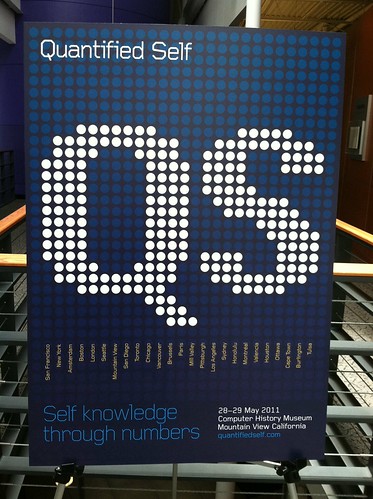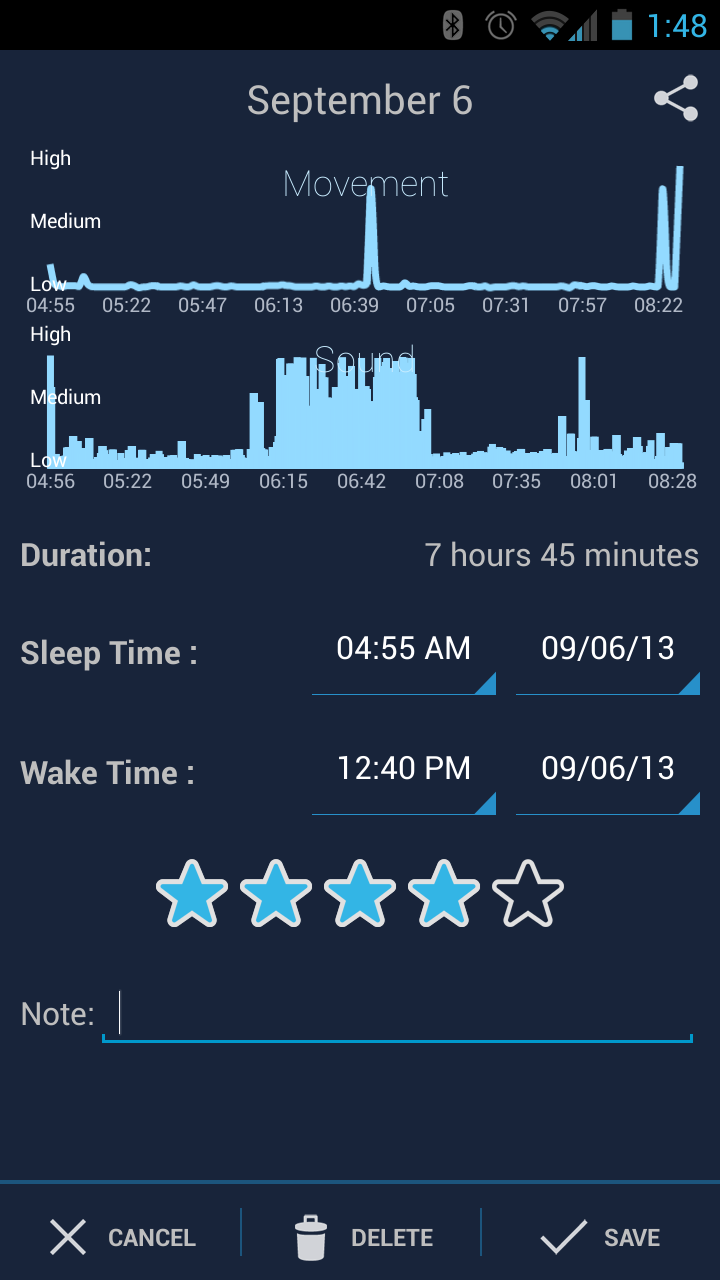[caption id="" align=“alignright” width=“224”] Image from Bytemarks on Flickr[/caption]
Image from Bytemarks on Flickr[/caption]
Lately I’ve been reading and thinking a lot about the Quantified Self movement. The basic idea is that technology has made it increasingly easy to track small changes in our behavior and our lives, and that the data we collect can be used to improve our situation. I wanted to start my very own Quantified Kimberly project, but as I thought about it, I realized that I’ve been practicing one variant or another of the Quantified Self for years.
Here are some of the things I’ve tracked:
- calories consumed
- weight gained or lost
- minutes spent exercising
- miles walked
- reps of various exercises
- blood pressure
- lipids levels
- blood sugar
- thyroid hormone levels
- menstrual cycles
- chores completed
- grades
- books read
Some people think QS has merit just by virtue of the fact that people are paying attention to what they do. But I think its real power lies in reflecting on the data and using it to inspire change and then track the results of that change.
Little Data
Of all the things I’ve tracked, the only ones that I’ve really used systematically or to improve my life are the medical data. I received two endocrine diagnoses (Hashimoto’s thyroiditis and polycystic ovary syndrome) largely because of my own efforts to track symptoms and hormone levels. Doctors are impressed by data. So are school administrators and legislators, of course.
It’s easy to feel bad about data collection; sometimes it feels like when we collect data on student achievement we are dehumanizing our students’ experiences and our own teaching. But I wonder if the QS movement has something to teach us about helping students take responsibility for their learning. This doesn’t necessarily mean having them pay attention to their own scores on standardized tests or benchmark assessments. It might mean something simpler and more readily visible.
QS and Formative Assessment
When I was teaching using the Cambridge Latin Course, each textbook unit came with an “I Can” checklist. The checklist put in jargon-free, student-friendly language the objectives for the unit. I would show this checklist to my students at the beginning and end of the unit. I think now that it would have been more effective for me to actually give them the checklist. Were I still in the school now, I think I might use completing the checklist as an exit ticket, and reviewing the checklist as a bellringer. As students walked in the door, I could hand them the checklist. Instead of checking or putting their initials in a box to indicate what they understood, I would have them note the date. I could then quickly review to see which students didn’t feel they had achieved the lesson objective. This would be a quick formative assessment and it would also allow students to see their own learning growing before their eyes.
QS in the 1:1 Environment
I think QS principles and techniques could be especially valuable in the 1:1 environment. I recently attended a Google Apps for Education summit, and I think you could probably use Google Forms and Spreadsheets to help students track their own learning. Many schools now require teachers to make grades available in a system that parents and students can review online, but how often do those particular numbers tell us about mastery or growth?
In the 1:1 environment, students might copy a simple form and spreadsheet that you provide, then fill out the form and be able to periodically review the data. The form might be as simple as one question - for example, “On a scale of 1 to 10, how much did you learn today?” It could also be used, however, to track the relationship between learning and other variables - for example, whether students had gotten enough sleep, or how long it had been since they had eaten. We know these physical needs affect learning. It might be valuable to students to see their own learning in relationship to these concerns.
All of this is me spitballing. As I explore this movement more, I think I will generate more ideas about how it might apply to learning.
The Quantified Kimberly: Sleep
[caption id="" align="alignright" width="259"] SleepBot[/caption]
SleepBot[/caption]
In the meantime, I’m designing my own QS experiment. In spite of the best thyroid numbers I’ve had in years, my energy has been low lately. I think poor quality sleep is the culprit. So I’m going to install SleepBot on my phone and track my sleep patterns for a week. After that, I’m going to use interventions based on the tips in this Lifehacker article. Follow me on Twitter for daily updates on my progress.
Here’s my schedule:
November 19 - 25 - Gather baseline sleep data; make no changes to sleep habits.
November 26 - December 2 - Intervention 1: Reduce screen time before bed.
December 3: Reflect on Intervention 1 and plan next steps.